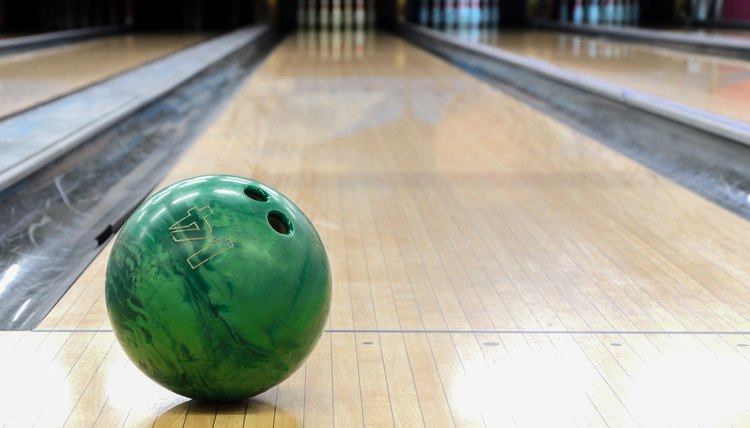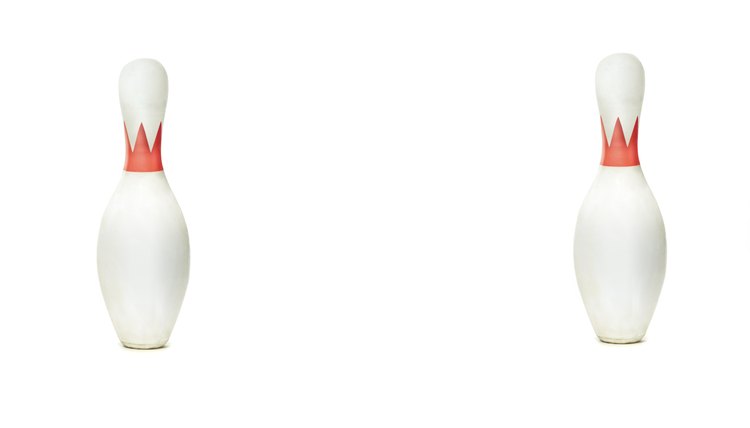What Are the Different Kinds of Splits in Bowling?

Bowling splits are an inevitable part of your trip to the bowling alley. Splits occur when the bowling ball thrown for an attempted strike knocks down most of the pins but leaves at least two standing, usually separated by at least one pin width, or sometimes on the opposite side of the lane in more difficult splits.
Depending on the type of split, most can be picked up by either striking the fore bowling pin, or front pin, at enough of an angle that it slides into the remaining pin or pins standing behind it, or by rolling the ball in such a manner to strike pins with both sides of the ball as it nears the end of the lane.
In bowling lingo, splits are known both by the number of the pins involved (such as the 2-7 split) or nicknames for common splits (such as the "Sour Apple" -- the 5-7-10 split).
"Bed Posts"

"Bed Posts." "Goal Posts." "Fence Posts." "Mule Ears." "Snake Eyes." This split -- the 7-10 split -- has many names.
This is due in part because it is the hardest split shot in bowling. The pins on the far ends of the back row remain standing while all other pins have been knocked away. Surprisingly, this split usually occurs on a first throw that is in the pocket (the space between the 1 and 3 pins for a right-handers and the 1 and 2 pins for a left-handed bowler) -- just not enough.
This split conversion, widely regarded as the hardest shot in all of bowling, as of publication, has only been converted by four Professional Bowlers Association (PBA) tour professionals on live television. Watch all four conversions in the video below.
"Big Four" and the 6-7-10 and 4-7-10 Splits
The "Big Four" split (4, 6, 7 and 10 pins) happens more to straight bowlers than hook bowlers.
A hooked throw crosses the head pin at an angle and drives it into the pins along the side. A straight ball, on the other hand, can roll into the head pin with no angle at all, causing the corner pins on either side in the back to go untouched. The 6-7-10 and the 4-7-10 splits which, surprisingly, have no name, occur much in the same way that the "Big Four" split does, except that the ball doesn't catch the head pin flush but, instead, slightly to one side or the other, taking out either the 4 or 7 pin.
The "Big Four," 6-7-10 and 4-7-10 splits are the most difficult spares to convert, next to the "Bed Posts."
"Baby" Splits and "Side-by-Side" Splits
"Baby" Splits are splits that involve pins that are separated by only one single pin or less. Examples of "Baby" Splits include the 2-7 split, 1-4 split, 1-6 split, and 3-10 split, all of which are fairly common. Not-so-common "Baby" splits (because they involve interior rather than exterior pins) include the 2-9 split and the 3-7 split.
Pins that are left standing next to each other are called "Side-by-Side" splits. They are considered splits because they have to be knocked down at the same time in order to convert. Examples of these splits include the 2-3 split, 4-5 split, 5-6 split, 7-8 split, 8-9 split and the 9-10 split.
Colorfully Named Splits
Some other splits have more colorful nicknames and most involve at least three pins that have to be knocked down. For example, there is the "Greek Church," which is either a 4-6-7-8-10 split or a 4-6-7-9-10 split (so named because of the similarity in looks to an old cathedral-type church).
There is also the "Big Five" (the 3-4-6-7-10 or 2-4-6-7-10 split), which is a fairly simple split to convert as long as you hit the 2 pin (for leftie bowlers) or the 3 pin (for right-handed bowlers) at an angle to drive the first pin into the others. Other splits like this include the "Big Six" (a 2-4-6-7-8-10 or 3-4-6-7-9-10 split), the "Lily" or "Sour Apple" (a 5-7-10 split) and the Cocked Hat (a 2-7-10 or 3-7-10 split).
References
Writer Bio
Based in Virginia Beach, Mark S. Baker has been working in editorial for more than 20 years. He has served as a writer and editor for publications such as the "Houston Post," "Boca Raton News" and "Interactive Week," among others. Baker also has a culinary arts degree from Johnson & Wales University and has his own catering business.
